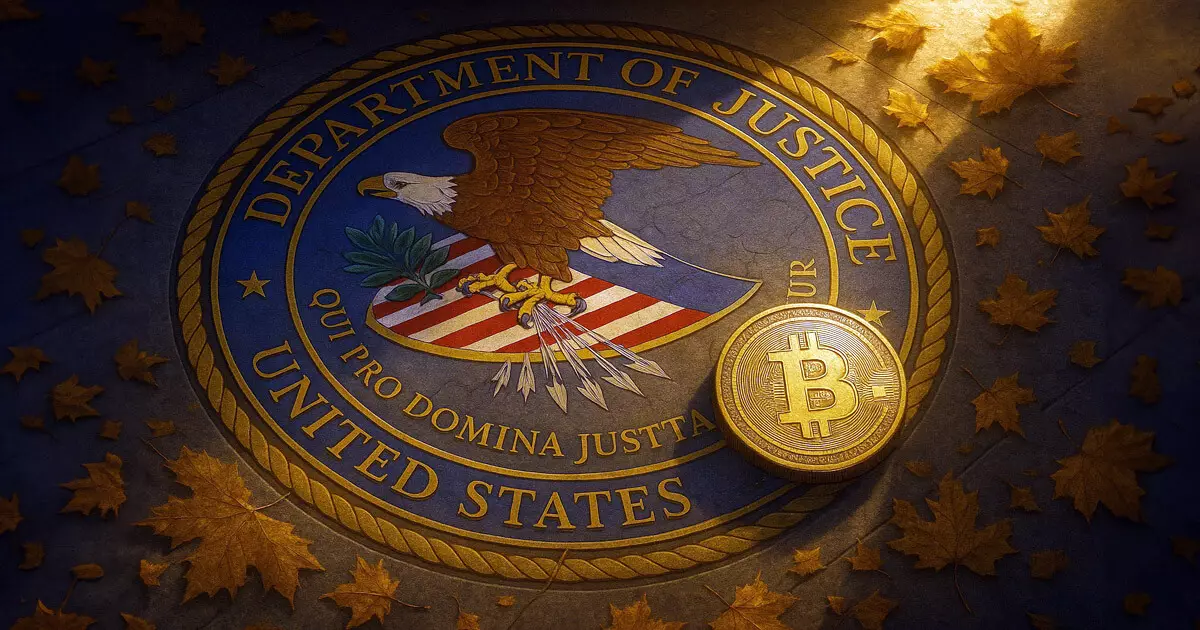The emergence of digital assets has revolutionized the financial landscape, offering unprecedented opportunities for investors. However, this nascent industry is rife with pitfalls. A revealing memo from the US Department of Justice (DOJ) has sparked a vital conversation about how victims of digital asset fraud—from the catastrophic collapses of platforms like FTX to the more subtle scams—are unjustly compensated for their losses. The decision to review outdated compensation methods underscores an increasing need for reform, especially since a staggering number of victims are left with nothing but the bitter taste of financial injustice.
When examining the compensation framework, it becomes glaringly evident that the current approach is antiquated and misaligned with the realities of digital assets. Victims are often reimbursed based on the asset’s value when they initially filed claims rather than reflecting the current market conditions. This shortsighted valuation means that early investors are unjustly penalized while the overall market continues to soar. The reality of this trend is disheartening, particularly when one considers the explosive growth of Bitcoin—where its value jumped over 500% from a mere $20,000 at FTX’s bankruptcy in November 2022 to over $108,000 by early 2025. This disparity highlights a critical flaw in the system, where victims are deprived of potential profits that could have been rightfully theirs had the compensation mechanisms evolved alongside the asset’s values.
Adapting the Legal Framework to Reflect Modern Asset Value
Acknowledging that current regulations cap recovery based on outdated dollar valuations is a step in the right direction, yet it hardly scratches the surface of the problem. As numerous digital asset platforms crumble under their operations, blaming a lack of regulatory clarity rather than illegal actions often misrepresents the reality of protection for those who invest in this volatile market. The advocacy by figures like “Mr. Purple,” an outspoken FTX creditor advocate, draws attention to the need for more than just a superficial adjustment: it underscores the necessity for digital assets to gain legal recognition akin to traditional financial instruments.
Regulatory frameworks can often seem an impenetrable mess, but it’s clear that they must evolve. The DOJ’s assessment of potential reforms might lead to significant updates in bankruptcy law, recognizing the unique nature of digital assets. If we allow such reforms, we could pave the way for compensation models that acknowledge not just the loss incurred but also the upside potential that victims are sorely missing out on. The conversation must steer toward a more equitable solution rather than adhering strictly to antiquated systems that fail to do justice to the nuances of digital investments.
Shifting Focus: The DOJ’s New Direction
Moreover, the DOJ’s decision to disband the National Cryptocurrency Enforcement Team (NCET) suggests a strategic pivot that could significantly impact how digital asset crimes are prosecuted. By refocusing its efforts on blatant criminal activities, like scams and market manipulation, rather than scrutinizing legitimate operations, the DOJ appears to be aiming for a more measured approach to regulation and enforcement. This shift should be welcomed, as targeting bad actors rather than the entire ecosystem is vital for nurturing innovation in the digital asset space.
Additionally, the DOJ’s involvement in President Trump’s Working Group on Digital Asset Markets indicates a concerted effort to seize the reins of policy-making at the top level. Coupling legal professionals with market stakeholders can yield invaluable insights that shape the foundation for a better regulatory landscape. The proposals and recommendations generated from this collaboration must prioritize better protection for investors while granting clarity to digital asset companies operating in the US.
The goal should not simply be to mend broken systems but to architect a forward-thinking framework that embraces the burgeoning digital economy while safeguarding those who enter it. Acknowledging the rapid advancements in the cryptocurrency market yet offering responses that feel reflective of the past only exacerbates the existing problems. It’s about time we ensure that the protections afforded to digital asset investors are robust, relevant, and reflective of market realities.


Leave a Reply